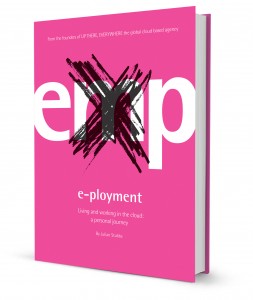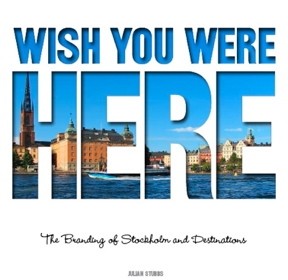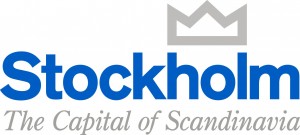Author Archives: Julian Stubbs
Place Marketing: Can cities be brands?
- Sunday, 08 December 2019 11:28
- Written by Julian Stubbs
- 0 Comments
The Rise of Independent Workers & e-ployment
- Thursday, 31 October 2019 06:03
- Written by Julian Stubbs
- 0 Comments
The UK’s Daily Telegraph ran a feature on the growing trend of people living and working where they want, as independent workers, through the use of cloud based tools. These global digital nomads are becoming an increasingly important part of the global shift in employment economics and cities and countries are having to consider the best ways to attract and retain these people as new residents.
Daily Telegraph Article
www.telegraph.co.uk/finance/personalfinance/expat-money/11177809/Working-online-The-rise-of-e-ployment.html
A new book covers the topic called E-Ployment: Living & Working in the Cloud.
 The book makes the point that globally there is a dramatic shift taking place in employment norms. We are seeing a large rise in the number of self-employed people around the world.
Not all of them wander the globe either. Some observers in the US have called this the rise of the 1099 economy, a term derived from the form Americans fill in and and file to the IRS (US tax authorities) to denote their self employed status in their annual tax assessment. This 1099 economy is predicted to count for a large and growing proportion of the total US working population within the next decade. Although the US self-employment rates are a topic that are debated, some commentators predict that self employed people will account for a major proportion of the US total workforce.
In an article on GIGAOM, a US blog that follows technology, Gene Zaino, CEO
of MBO Partners, predicts in a report from his company that there will be 65
to 70 million independent workers within the next decade. The same report also states that the majority of people in independent work chose it, and had not been forced into it, and that a large number of those in traditional employment are considering moving across to work independently because of the lifestyle benefits and because of a lack on fulfilment with traditional employment.
This rise in the number of freelance workers obviously raises a number of
different issues with regards to insurance, healthcare and pensions etc. These
issues vary greatly depending on where in the world you are located. As an
independent worker in Sweden for example, provided you are paying your personal tax, the governmental systems for health and pensions will cover you.
E-Ployment Living & Working in the Cloud is available on Amazon.
The book makes the point that globally there is a dramatic shift taking place in employment norms. We are seeing a large rise in the number of self-employed people around the world.
Not all of them wander the globe either. Some observers in the US have called this the rise of the 1099 economy, a term derived from the form Americans fill in and and file to the IRS (US tax authorities) to denote their self employed status in their annual tax assessment. This 1099 economy is predicted to count for a large and growing proportion of the total US working population within the next decade. Although the US self-employment rates are a topic that are debated, some commentators predict that self employed people will account for a major proportion of the US total workforce.
In an article on GIGAOM, a US blog that follows technology, Gene Zaino, CEO
of MBO Partners, predicts in a report from his company that there will be 65
to 70 million independent workers within the next decade. The same report also states that the majority of people in independent work chose it, and had not been forced into it, and that a large number of those in traditional employment are considering moving across to work independently because of the lifestyle benefits and because of a lack on fulfilment with traditional employment.
This rise in the number of freelance workers obviously raises a number of
different issues with regards to insurance, healthcare and pensions etc. These
issues vary greatly depending on where in the world you are located. As an
independent worker in Sweden for example, provided you are paying your personal tax, the governmental systems for health and pensions will cover you.
E-Ployment Living & Working in the Cloud is available on Amazon.
 The book makes the point that globally there is a dramatic shift taking place in employment norms. We are seeing a large rise in the number of self-employed people around the world.
Not all of them wander the globe either. Some observers in the US have called this the rise of the 1099 economy, a term derived from the form Americans fill in and and file to the IRS (US tax authorities) to denote their self employed status in their annual tax assessment. This 1099 economy is predicted to count for a large and growing proportion of the total US working population within the next decade. Although the US self-employment rates are a topic that are debated, some commentators predict that self employed people will account for a major proportion of the US total workforce.
In an article on GIGAOM, a US blog that follows technology, Gene Zaino, CEO
of MBO Partners, predicts in a report from his company that there will be 65
to 70 million independent workers within the next decade. The same report also states that the majority of people in independent work chose it, and had not been forced into it, and that a large number of those in traditional employment are considering moving across to work independently because of the lifestyle benefits and because of a lack on fulfilment with traditional employment.
This rise in the number of freelance workers obviously raises a number of
different issues with regards to insurance, healthcare and pensions etc. These
issues vary greatly depending on where in the world you are located. As an
independent worker in Sweden for example, provided you are paying your personal tax, the governmental systems for health and pensions will cover you.
E-Ployment Living & Working in the Cloud is available on Amazon.
The book makes the point that globally there is a dramatic shift taking place in employment norms. We are seeing a large rise in the number of self-employed people around the world.
Not all of them wander the globe either. Some observers in the US have called this the rise of the 1099 economy, a term derived from the form Americans fill in and and file to the IRS (US tax authorities) to denote their self employed status in their annual tax assessment. This 1099 economy is predicted to count for a large and growing proportion of the total US working population within the next decade. Although the US self-employment rates are a topic that are debated, some commentators predict that self employed people will account for a major proportion of the US total workforce.
In an article on GIGAOM, a US blog that follows technology, Gene Zaino, CEO
of MBO Partners, predicts in a report from his company that there will be 65
to 70 million independent workers within the next decade. The same report also states that the majority of people in independent work chose it, and had not been forced into it, and that a large number of those in traditional employment are considering moving across to work independently because of the lifestyle benefits and because of a lack on fulfilment with traditional employment.
This rise in the number of freelance workers obviously raises a number of
different issues with regards to insurance, healthcare and pensions etc. These
issues vary greatly depending on where in the world you are located. As an
independent worker in Sweden for example, provided you are paying your personal tax, the governmental systems for health and pensions will cover you.
E-Ployment Living & Working in the Cloud is available on Amazon.
Three elements of great place branding
- Friday, 04 October 2019 21:41
- Written by Julian Stubbs
- 0 Comments

Three elements of great place branding
Several criteria that make for good place branding, which go beyond just the creation of a logo and slogan include:1. Long-term focus.
Too many place branding activities are ‘campaign focused’ rather than thinking long-term. Places are difficult things to market and create strong brands for. Branding takes time and a campaign tends to be a shorter term, one off, event. I think part of the issue is that traditional advertising agencies themselves are very campaign oriented. Traditional advertising agencies aren’t terribly good at dealing with the greater complexity that place branding really demands. Equally the place or destination itself needs to clearly identify goals with definable long term strategic objectives. What is the place trying to achieve? What are their goals in terms of either inward investment, tourism or residential growth? Too often these are missing and even when present, tend to be expressed in generalities. Each place is different and demands a different, long-term, set of objectives.2. Distinct positioning.
Once these longer term goals and objectives are identified the focus should be on creating a really distinct positioning. The art of marketing is the art of branding. The art of branding is the creation of a distinct positioning. Being number one in your chosen category. It is the hardest thing to get right. You need a simple and clear proposition. A distinct positioning means being just that – distinct. You can’t be all things to all people. You need to stand for something and that will probably lead to some people not liking it. But if you produce wallpaper that doesn’t stand out, odds are you won’t offend anyone — but equally you won’t stand out either.3. Communication that really communicates.
Beyond the branding elements, clear communications thinking with a good mix of traditional media and activities and social media is important. I think nearly all places and destinations engage in some form of social media activity nowadays, but unfortunately too much of it is disjointed and sporadic. The world of marketing has been turned on its head in the last ten years and nowadays customers are in control of what they want to see and experience. They can get more information, and form opinions about places, and brands, without ever looking at your website or following your social media posts. The whole focus nowadays should be built around attracting the right customers to seek you out and the way you do that is with great quality content and strong inbound marketing programs. If you are not using this approach in your marketing yet, odds are you are producing lots of content but it is probably being wasted, and measurement of results is not being utilised to refine messaging and campaigns. The key is creating great quality content, without it being overly sales oriented. Approach it as you would a relationship with a person. On the first date you don’t normally offer to get married and have kids. You get to know each other and gently build the relationship. It’s like that with marketing and especially content and inbound. More about Place Branding – Q&APlace Branding Insights
Learn more from experts in this free book chapter on Working with Stakeholders: Re-thinking Place Branding from a Practice Perspective. Go to this link: Re-Thinking Place Branding ChapterA CRISP Approach to Place Marketing
- Thursday, 26 September 2019 10:01
- Written by Julian Stubbs
- 0 Comments
In my organisation – UP THERE, EVERYWHERE – we work a lot with place marketing. Now although place marketing is a highly demanding and very specific area with its own unique set of challenges, learning from some of the best practices of regular consumer goods brands is important, and many practices and issues are applicable. I’d like to introduce you to a friendly little acronym we have developed at UP THERE, EVERYWHERE -. CRISP.
Consumer brands teach us that whatever strategy and tactics we might use and whereever the message might appear, it has to be deployed in a consistent fashion.
McDonalds provides a great example of a brand that is incredibly consistent globally in managing its messaging but more importantly in managing its products and customer experience. Wherever the brand touches consumers its consistent. Do we go to McDonalds for the best food in the world? Possibly not.
Do we go there because its consistent wherever we visit a McDonalds in the world? Absolutely. Whatever you are going to do, do it consistently.
When it comes to the positioning and marketing approach you take for your brand, it also has to be relevant to your brands offering as well as relevant to the audience you are talking with. The Energizer Bunny has been bopping around our television screens since 1989 and has been used by the Energizer Company of St. Louis, Missouri to demonstrate the companys claimed superior battery life. The little pink bunny with its motto of Keep Going perfectly communicates the relevance of this message. The campaign has resonated with the public so well in fact, that the bunny has his own personal website where he (and Im assuming despite his colour preferences its a he rabbit) lists a number of personal facts, among them that the person hed most like to meet is Lance Armstrong. Relevance is everything in brand building.
Emotional intimacy is central to branding. We all make our choices based on a mix of both practical as well as emotional reasons. Great brands know that you have to leverage emotional intimacy. I love holding workshops with engineers, indeed some of my closest friends are engineers. The wonderful thing is that they are very logical people and often claim never to have acted out of emotional intimacy in their lives. Everything comes down to cost and specification. Id love to have seen some of these people propose to their wives or husbands if thats the case. Well, you seem to be the best available model for your age, I reckon youre a fair catch for what its going to cost me. Now would you like to get married? Dont think so.
These logic driven individuals also claim that, frighteningly, their customers are just like them. Again its about cost and specification. Now Ive observed a number of times these are the same people who drive up in a BMW or a Mercedes. They are the same people who stand there with a Mont Blanc pen tucked in their shirt pockets. When I see this, I always offer to swap my Pilot ball pen, which is a fine pen having cost me all of three dollars for their Mont Blanc but they never seem to want to take me up on the deal. Strange really, I reckon my Pilot works equally well. The truth is we all buy things for a mix of both practical as well as emotional reasons. To get people to love you and your brand you need emotional intimacy. Its not all pure logic. Thank goodness. Get close to your consumers and get intimate.
Getting people involved on this level is vital for, consumer, business to business and Place Brands.
The idea at the centre of the brand approach will also need to be very simple, to cut through all the media noise we are all increasingly facing every day. Simple ideas are normally powerful ideas. The remarkable Sam Goldwyn said: If you cant write your movie idea on the back of a business card, you aint got a movie. This same sentiment is equally applicable to any great idea. In essence, they have to be simple. Apple is one of the best known brands in the world, and its advertising always goes right to the heart of the issue with its simplicity. Great brands make a habit of keeping things simple.
Finally, if we are going to be serious about gaining some traction and awareness from our marketing efforts, we will also need to be persistent over a long period of time. Great brands keep on going, doing similar things over an extended period of time. Again a bit like that really annoying little pink Energizer Bunny. But take Coca-Cola – the worlds most valuable brand. In the 2011 Interbrand Best Global Brands Report, the Coca-Cola brand has an estimated book value of plus US$ 72 billion. One of the keys to the success of the brand has been the persistence shown by the company since it was started in 1886. The same basic theme of delicious and refreshing is still used today over one hundred and twenty years after it was launched. Being persistent its the real thing.
Acronym for the day – CRISP. Consistent, Relevant, Intimate, Simple and Persistent.
Place Branding & Names
- Thursday, 21 March 2019 11:19
- Written by Julian Stubbs
- 0 Comments

Well as the bard said ‘A rose by any other name might smell as sweet’, but names for places really do matter and can have an impact.
Good bit on the Beeb on the topic. Click the link:
BBC Importance of names


